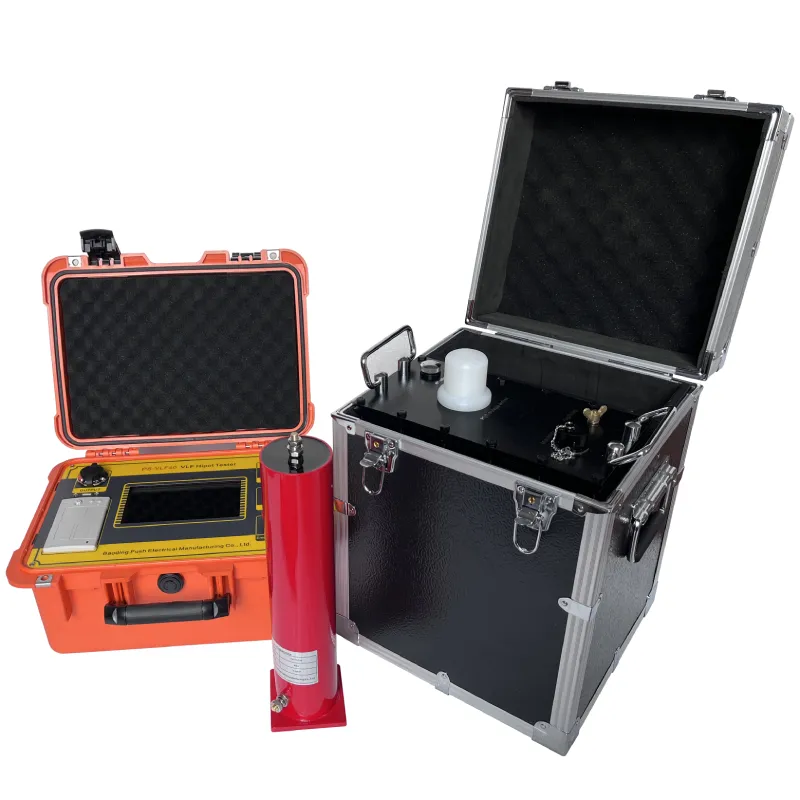TEL:
+86-0312-3189593
 English
English

Telephone:0312-3189593

Email:sales@oil-tester.com
2 月 . 08, 2025 06:36
Back to list
PS-SC03 Three Phase Secondary Current Injection Kit
Understanding CT Winding Resistance Testing A Comprehensive Guide
Furthermore, experts acknowledge factors such as temperature and test lead resistance, which can affect the test outcome. To counteract these variables, tests should be performed under controlled conditions, and equipment must be calibrated regularly to maintain accuracy. Knowledge of the transformer's design also plays a critical role. Different transformer types (e.g., toroidal or bar-type) might necessitate distinct testing approaches to achieve reliable results. Authoritativeness Endorsement from Industry Leaders CT winding resistance testing is endorsed by electrical industry authorities and standards organizations, such as the Institute of Electrical and Electronics Engineers (IEEE) and the International Electrotechnical Commission (IEC). These bodies provide guidelines and best practices to ensure tests are conducted accurately and safely, highlighting the method's importance in overarching electrical safety protocols. Industry leaders often publish case studies and technical reports showcasing projects where CT winding resistance testing effectively prevented system failures. By aligning with these standards and documented successes, companies reinforce their commitment to high-quality engineering practices and operational excellence. Trustworthiness Building Confidence through Proven Results Establishing trust in the efficacy of CT winding resistance testing comes from a consistent track record of identifying potential issues before they escalate. Companies that regularly implement these tests can assure stakeholders of their proactive stance on risk management. The use of reliable testing equipment and adherence to established testing protocols ensures that engineers and facility managers can base maintenance and operational decisions on accurate data. In conclusion, CT winding resistance testing represents a key component in maintaining the health of electrical systems. By leveraging solid experience, technical expertise, authoritative standards, and a trustworthy approach, professionals can significantly enhance the reliability and efficiency of current transformers. This proactive maintenance strategy not only secures equipment performance but also provides peace of mind, knowing that potential issues are addressed before they lead to costly consequences.


Furthermore, experts acknowledge factors such as temperature and test lead resistance, which can affect the test outcome. To counteract these variables, tests should be performed under controlled conditions, and equipment must be calibrated regularly to maintain accuracy. Knowledge of the transformer's design also plays a critical role. Different transformer types (e.g., toroidal or bar-type) might necessitate distinct testing approaches to achieve reliable results. Authoritativeness Endorsement from Industry Leaders CT winding resistance testing is endorsed by electrical industry authorities and standards organizations, such as the Institute of Electrical and Electronics Engineers (IEEE) and the International Electrotechnical Commission (IEC). These bodies provide guidelines and best practices to ensure tests are conducted accurately and safely, highlighting the method's importance in overarching electrical safety protocols. Industry leaders often publish case studies and technical reports showcasing projects where CT winding resistance testing effectively prevented system failures. By aligning with these standards and documented successes, companies reinforce their commitment to high-quality engineering practices and operational excellence. Trustworthiness Building Confidence through Proven Results Establishing trust in the efficacy of CT winding resistance testing comes from a consistent track record of identifying potential issues before they escalate. Companies that regularly implement these tests can assure stakeholders of their proactive stance on risk management. The use of reliable testing equipment and adherence to established testing protocols ensures that engineers and facility managers can base maintenance and operational decisions on accurate data. In conclusion, CT winding resistance testing represents a key component in maintaining the health of electrical systems. By leveraging solid experience, technical expertise, authoritative standards, and a trustworthy approach, professionals can significantly enhance the reliability and efficiency of current transformers. This proactive maintenance strategy not only secures equipment performance but also provides peace of mind, knowing that potential issues are addressed before they lead to costly consequences.
Latest news
-
Differences between open cup flash point tester and closed cup flash point testerNewsOct.31,2024
-
The Reliable Load Tap ChangerNewsOct.23,2024
-
The Essential Guide to Hipot TestersNewsOct.23,2024
-
The Digital Insulation TesterNewsOct.23,2024
-
The Best Earth Loop Impedance Tester for SaleNewsOct.23,2024
-
Tan Delta Tester--The Essential Tool for Electrical Insulation TestingNewsOct.23,2024





